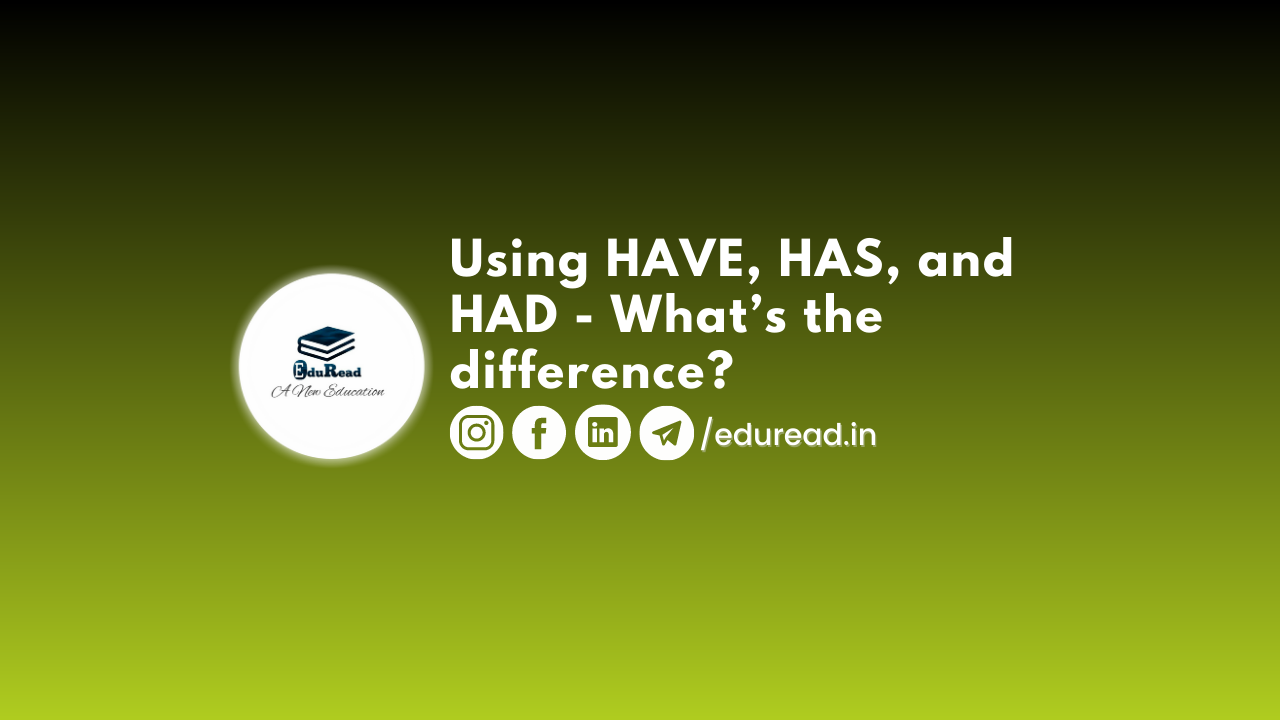Have you ever been confused about when to use “have,” “has,” or “had” in English? These three words may seem similar, but they have distinct uses and meanings. In this blog post, we will explore the differences between “have,” “has,” and “had” and provide clear examples to help you understand their usage.
Section 1: Understanding “Have”
1.1 The Basic Meaning of “Have”
The word “have” is a verb that denotes possession, ownership, or experiencing something.
1.2 Present Tense: “Have” and “Has”
In the present tense, “have” is used with plural subjects and the pronouns “I,” “you,” “we,” and “they.” On the other hand, “has” is used with singular subjects and the pronouns “he,” “she,” and “it.”
Example 1:
- I have a cat. (Singular subject, “I”)
- She has two dogs. (Singular subject, “she”)
- We have a new car. (Plural subject, “we”)
- They have three bicycles. (Plural subject, “they”)
1.3 Expressing Actions and Experiences
“Have” is also used to express various actions, activities, or experiences.
Example 2:
- I have dinner with my family every evening.
- He has a job interview tomorrow.
- They have a great time at the party.
Section 2: Understanding “Has”
2.1 Singular Third-Person Subject
The word “has” is specifically used with singular third-person subjects, such as “he,” “she,” and “it.”
Example 3:
- He has a new car.
- She has an appointment at 3 o’clock.
- The dog has a bone.
2.2 Possession and Characteristics
“Has” is commonly used to indicate the possession or characteristics of someone or something.
Example 4:
- The book has an interesting storyline.
- The city has beautiful parks.
- My brother has a talent for playing the guitar.
Section 3: Understanding “Had”
Advertisement
3.1 Past Tense: “Had”
The word “had” is the past tense form of “have” and is used to express possession, experiences, or actions that occurred in the past.
Example 5:
- She had a lovely vacation last summer.
- We had a great time at the concert.
- They had already finished their work when I arrived.
3.2 Past Perfect Tense
In the past perfect tense, “had” is used to indicate an action that happened before another action in the past.
Example 6:
- I had studied English before I moved to an English-speaking country.
- She had finished cooking when her guests arrived.
Conclusion
In summary, understanding the differences between “have,” “has,” and “had” is crucial for accurate and effective communication in English. Remember that “have” is used with plural subjects and pronouns “I,” “you,” “we,” and “they.” “Has” is used with singular third-person subjects, while “had” is the past tense form. By applying these rules and practicing with various examples, you will gain confidence in using “have,” “has,” and “had” appropriately. Keep in mind that consistent practice is key to mastering these essential aspects of English grammar.
So, have fun learning and practicing your English skills!
Follow Us for more such content to improve your speaking skills:
To know more, check out here: https://eduread.in/learn-airport-vocabulary-speak-new-york/
And visit us for more.
